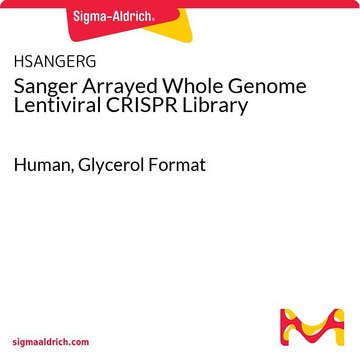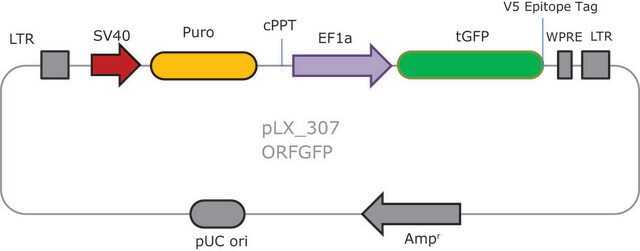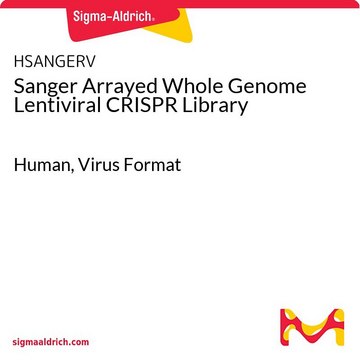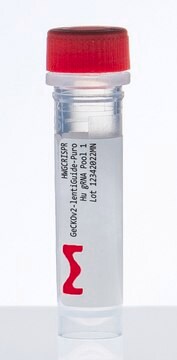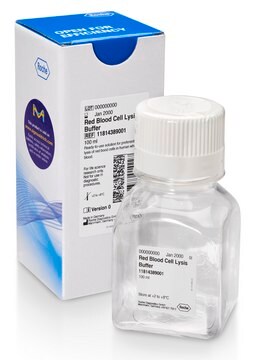MSANGERV
Sanger Arrayed Whole Genome Lentiviral CRISPR Library
Mouse, Virus Format
Synonym(s):
Arrayed CRISPR library, Sanger CRISPR library
About This Item
Recommended Products
Quality Level
packaging
pkg of 10 μL (384-well plate)
concentration
1x106 VP/ml (via p24 assay)
application(s)
CRISPR
shipped in
dry ice
storage temp.
−70°C
Looking for similar products? Visit Product Comparison Guide
Related Categories
General description
Application
Features and Benefits
- Vector: U6-gRNA/PGK-Puro-2A-BFP (gRNA only)
- Simplify the workflow with puromycin selection
- Illuminate CRISPR-expressing cells with BFP
Additional Features
- Better, not bigger: Two optimized clones per mouse gene reduces the time, cost, and scale of screening experiments
- Ready-to-screen: Clones are arrayed in a robotics-friendly 384-well format for high throughput screening
- Collaborative: Real-time, library validation continues
For detailed information on the Sanger library, click here
Packaging
Components
Request a Quote or More Information
Physical form
Other Notes
Recommended products
Legal Information
Storage Class Code
12 - Non Combustible Liquids
WGK
WGK 3
Flash Point(F)
Not applicable
Flash Point(C)
Not applicable
Choose from one of the most recent versions:
Certificates of Analysis (COA)
It looks like we've run into a problem, but you can still download Certificates of Analysis from our Documents section.
If you need assistance, please contact Customer Support.
Already Own This Product?
Find documentation for the products that you have recently purchased in the Document Library.
Articles
Genome-wide loss-of-function screening is a powerful approach to discover genes and pathways that underlie biological processes. Now complete knockout is achievable with two optimized gRNAs per gene. Minimized clone number ensures the most specific screening possible while controlling time and cost.
Get tips for handling lentiviruses, optimizing experiment setup, titering lentivirus particles, and selecting helpful products for transduction.
Protocols
Learn about Sanger Sequencing steps or the chain termination method and how DNA sequencing works and how to read Sanger Sequencing results accurately for your research.
FACS (Fluorescence-Activated Cell Sorting) provides a method for sorting a mixed population of cells into two or more groups, one cell at a time, based on the specific light scattering and fluorescence of each cell. This method provides fast, objective, and quantitative recording of fluorescent signals from individual cells.
Our team of scientists has experience in all areas of research including Life Science, Material Science, Chemical Synthesis, Chromatography, Analytical and many others.
Contact Technical Service